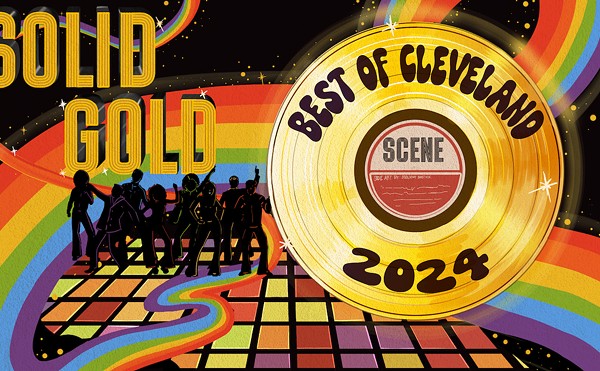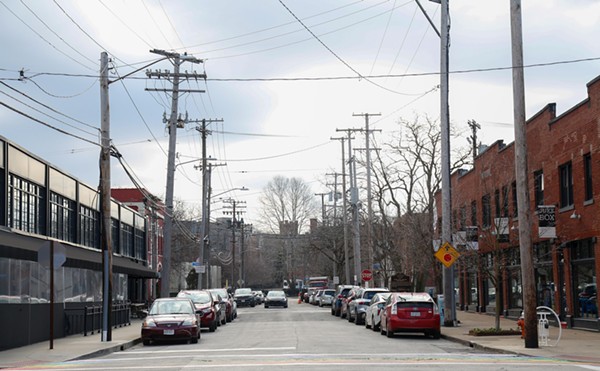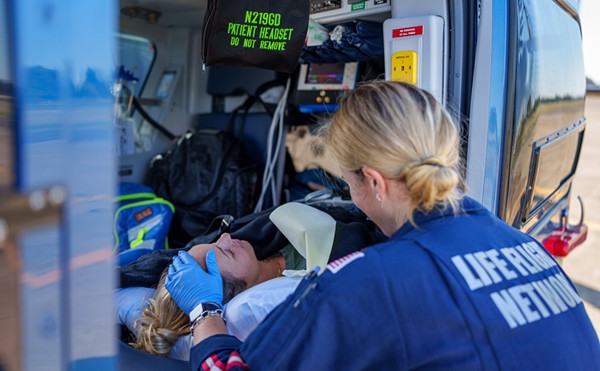Greetings, earthlings.
We are breaking our longstanding silence and utilizing this unorthodox means of communication to acknowledge a special event: The 60th anniversary of the Cleveland Ufology Project, a group devoted to solving the mysteries of flying saucers. Nonbelievers may find this unremarkable. But CUP is now the oldest organization of its kind in the country, and perhaps the world.
Over the decades, CUP has ridden the rapids of the UFO phenomenon: the national obsession sparked by the famous sightings of the late 1940s and early '50s; the Cold War fears that gave rise to Project Blue Book and the seminal contributions of Ohio State astrophysicist J. Allen Hynek; the fever of the 1960s, when a talk by Frank Edwards, the author of Flying Saucers – Serious Business drew 2,000 people to Lakewood Civic Auditorium; the crash of interest and credibility after the 1969 release of the Condon Report; and the bare ebb of survival during the '80s and '90s. Even today, amid trash like "Ancient Aliens" and "UFO Hunters," the organization has maintained impressive standards.
We have watched all this with curiosity and amusement — and to be perfectly honest, some measure of satisfaction. It's flattering when a man like Earl Neff, the longtime chairman of CUP and most significant figure in the organization's history, devotes 40 years of his life to studying our fleeting appearances. Without Neff's tireless efforts to investigate and promote UFOs, there would likely be no CUP today.
Unfortunately, Neff's files have been broken up and scattered around the world; many now fill the shelves at the Archives for UFO Research in Norrkoping, Sweden. This fragmented documentation doesn't add much credibility to an organization whose members can't even tell you exactly when and where the first meeting took place. Still, it's entirely in keeping with a subject which, by its very nature, exists on the edges of belief. The mystery of UFOs is what keeps people intrigued and engaged — and accounts for the perseverance of a group that occupies a unique niche not just locally, but internationally.
"I've spoken to many grass-roots UFO groups, not just in the United States but in England, France, Japan, and Canada," says veteran UFO researcher and writer Peter Robbins. "And I can tell you that the longevity of CUP is absolutely unheard of. Maybe it's something in the air in Ohio. But there is nothing like it in the world."
It would have been easy to mistake CUP's anniversary dinner, held appropriately at the 100th Bomb Group restaurant near the airport last month, for a retiree reunion. Old women hobbled around on canes; men in their 50s, 60s and older bemoaned the effects of the Internet on membership. Even Peter Robbins, the featured guest speaker for the evening, was reprising the first speech he delivered to the organization more than 30 years ago.
Nor would the program have signaled anything unusual. Current co-directors Aaron Clark and Tom Wertman greeted the group of about 45 devotees, who watched a slide show of past meetings and members during dinner, then a short video of sci-fi clips about aliens and space travel from the past 60 years, starting with the famous opening line of the Superman television series: "Look! Up in the sky!"
That was the early 1950s, when everybody was looking up in the sky. The modern era of flying saucers was launched in June 1947, when Kenneth Arnold, a private pilot flying near Mt. Rainier in Washington, reported seeing a string of bright, convex- and crescent-shaped objects go whizzing by the mountain at supersonic speed. Two weeks later, his sighting took on ominous significance when officials at the Roswell Army Air Field base in New Mexico announced they had recovered the remains of a "flying disc" that had crash-landed in the desert.
The Roswell incident began when a rancher named Mac Brazel found some debris on his property that appeared to have fallen from the sky. Many years later, it was revealed to be the remains of an aerial surveillance balloon that was monitoring the upper atmosphere for signs of Soviet atomic weapons tests. But with Cold War paranoia building, Army officials did not want to let the Russians know they were being watched. So they put out a cover story about recovering the wreckage of a UFO, thinking it would provide an effective distraction.
That it did: "RAAF Captures Flying Saucer" the Roswell Daily Record blared in a banner headline on July 8, and the world has never been the same. An entire cottage industry grew up around "the Roswell incident," as it came to be known, with Ohio taking on an important role. Supposedly, the wreckage and alien corpses were taken to Wright-Patterson Air Force Base near Dayton for examination and storage. To this day, true believers appear on the base asking where they can find Hangar 18 or the "cold room" where the bodies were put on ice.
So there was a lot to talk about when a group of four couples — or maybe fewer, no one is sure — began meeting in each other's living rooms in Cleveland in 1952. UFO sightings were in the news again: Over two weekends in July, strange lights appeared in the night skies over Washington, DC, and multiple objects were tracked on radar screens at National Airport. One of the jet fighter pilots sent to intercept them reported seeing four glowing objects that surrounded his plane, then sped off.












